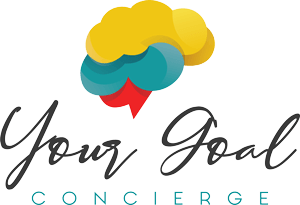Fear of Success Prominent Fear of Imposter Syndrome
Erica Kesse
Combatting Fear for Leaders

Imposter syndrome is the persistent inability to believe that one's success is deserved or has been legitimately achieved as a result of one's own efforts or skills: Another name for it is perceived fraudulence involving feelings of self-doubt and person incompetence that persist despite your education, experience, and accomplishments. The prominent fear in imposter syndrome is having a fear of success.
Fear of success boils down to the belief that if you pursue your goals and dreams, your efforts will ultimately cost you and your life will change for the worse.
You may avoid success because you worry about all of the challenges you need to overcome to make your dreams a reality. Or you might fear that if you make the attempt, you may discover once and for all that your goals are out of reach.
You might worry that achieving success will turn you into a different person or cause greater negative consequences, such as relationship repercussions or social and economic backlash.
Or maybe you have a subconscious belief that money is bad and “good people” aren’t supposed to be financially successful – so you worry that achieving your dreams will turn you into a selfish person or sellout.
But all of these fears you use to avoid success are just stories you’re telling yourself! They are not objectively “true” in any way. If you allow yourself to believe in them, you will never take action or feel the life satisfaction that comes from discovering what you’re truly capable of accomplishing.
It is when an individual is consistently afraid of not being capable of his accomplishments and lives with the fear of being exposed as frauds. It includes not just the fear of being accused of being a fraud but also makes an individual feel that they do not deserve any of the good things happening to them. It also brings out the feeling of being inferior and one constantly feels the following:
“It’s happening to me because of my luck, I personally do not have anything to do with the success”
“I still haven’t done enough”
“All this praise is only till they find out the truth”
“Everyone is so happy to be around me, but I feel like a fake”
Types of Imposter Syndrome
1. The Perfectionist: Impostor syndrome and perfectionism are two sides of the same coin. Perfectionists set very high goals for themselves and when they fail to achieve those goals they doubt their own capabilities. They often fail to realize that they punish not just themselves but also the group they are associated with. They become control freaks and feel that no one can do a work as good as them. They become micromanagers, find it difficult to decentralize the authority, set high standards and expect 100% out of everything and when things don’t work out they sulk in grief.
2. The Superwoman/man: Imposter syndrome influences a person’s psychology so much that they tend to consider themselves to be frauds that are running game on everyone. So in order to cover up these insecurities, they stay in the workplace for longer durations to show that they are putting an actual value to the work. They completely dismiss their hobbies and passions. And whenever they are not working, they rue that they are putting a lot of time into the drain. They become complete workaholics.
3. The Natural Genius: People struggling with imposter syndrome are also natural geniuses. They associate success with their abilities rather than the efforts. If they are finding it difficult to finish a particular work they doubt their abilities and believe that they must not be good enough. They can’t stand the thought of being not good enough. They set their bar really high and expect to get it done in the first try itself. The natural geniuses with imposter syndrome will have a track record of getting A ’s, being called the smart one in the family, failures will shake their confidence and try to avoid challenges with the fear of not being able to do it in the first try.
4. The Rugged Individualist or Soloist: Another type of imposter syndrome where the individuals do not like to be mentored nor they take assistance from anyone. They feel that asking for help would reveal them as fake. Fakers who are faking to ace at everything. Even if they need assistance from somebody they make it sound like a requirement for the work and not for themselves.
5. The Expert: This segment of people suffering from imposter syndrome feels that they will be exposed very soon of their fraud. They feel that they have tricked their managers into getting their jobs or projects. They often shy away from applying to jobs, they look for more and more training and certifications to improve themselves.
Let’s process the fear of success a little more.
Fear of success can show up in many areas of your life – here are the most common:
Self-sabotage
Self-sabotage is when you create challenges for yourself that make it harder for you to achieve future success.
You may consistently “forget” deadlines, make poor financial choices, or always start projects but never finish them. These acts of self-sabotage ultimately cost you by preventing you from moving forward.
Negative beliefs
Negative self-beliefs are automatic thoughts such as “I’m inadequate,” “I’m weak,” or “I’m a failure.”
We turn these negative beliefs into self-fulfilling prophesies by constantly looking for evidence that proves them correct. If you expect yourself to fail or experience a negative outcome, guess what? You will.
Avoidance
Avoidance strategies protect you from such emotions as anxiety and discomfort in the short term, but in the long run, they cause you to experience more of the feelings you’re hoping to avoid. That’s because they reinforce your fear around whatever you’re avoiding, so the next time you’re in that same situation, you’ll feel even more uncomfortable and go even further to sabotage your future success.
Procrastination
Fear of success can cause you to procrastinate and delay the completion of your tasks just long enough for opportunities to pass you by, or start projects but never finish them.
You may think you’re sparing yourself from the challenge of taking action, but really you’re keeping yourself stuck where you are.
Perfectionism
Perfectionists deal with the fear of success by setting an unrealistically high bar for themselves that they know they’ll never meet.
Low self-esteem drives them to see external validation and other people’s approval rather than relying on their own internal compass to guide them toward a life that will make them happy.
Quitting
Do you find yourself quitting things at the first setback you encounter? Or maybe you work for months on something then quit when the finish line is just in front of you.
People usually quit because if they don’t believe they have what it takes to cope with the results. And if they never finish the job, they’ll never know how well (or how badly) it will turn out.
Self-Destructive Behavior
Engaging in self-destructive behaviors such as substance abuse, binge eating, gambling, or compulsive shopping is another sign that you may be struggling with a fear of success.
Emotional Blocks
When you imagine yourself achieving success, do such emotions as guilt, anxiety, or pressure come up for you?
If the thought immediately makes you feel an intense amount of pressure or makes you worry about relationship repercussions, that’s a sign that fear of success is getting in the way of your goals.
Lack of Motivation
When you think about everything you have to do to achieve your goals, do you get fired up – or does the idea leave you feeling drained or overwhelmed?
If the latter, please understand that those feelings don’t mean you’re lazy! It’s far more likely that your fear of success is the problem.
Discomfort
Achieving success involves outgrowing your current situation and stepping into unfamiliar territory – and that can be uncomfortable.
You have to get comfortable with being uncomfortable and trust that your efforts will deliver the life satisfaction you seek – and that even if you stumble, you will be able to find your way forward to your goals.
Imposter Syndrome is when many types of fears join forces. Imagine a huge nasty mud monster with several faces of fear pushing out of it saying negative things to you and knocking you down so it can consume you. The way to combat it is love. It is with love for yourself that allows you:
- to have tell yourself the truth, to be aligned with you mind, heart, a gut to move with ease and knowing,
- to be able to see it for what it really is in visualizing the best version of yourself,
- to be able to take the negative thoughts, acknowledge them, and let them float away without attaching,
- to be able to continue to rest in doing the things that bring joy in your life.
Success in addressing, or at least reducing, imposter syndrome most likely results from supporting our internal constructs and can be helped through a focus on:
Identify Your Obstacles
How: Take some time to reflect on where your fear of success has come from. What experiences caused you to develop this fear – and what roadblocks are you putting in your own path as a result?
Overcome Negative Beliefs
The mirror exercise is a simple yet powerful way to combat a fear of success and reframe how you think about yourself and associate success with yourself. Here’s how you do it:
Before going to bed, stand in front of a mirror and appreciate yourself for all you have accomplished during the day.
Start by looking directly into your eyes for a few seconds, then address yourself by name and begin appreciating yourself out loud for the following things:
- Achievements: Business, financial, educational, personal, physical, spiritual, or emotional
- Personal disciplines you kept: Dietary, exercise, reading, meditation, prayer
- Temptations that you did not give into: Eating dessert, lying, watching too much TV, staying up too late, drinking too much
Maintain eye contact with yourself throughout the exercise. When you’re finished appreciating yourself, complete the exercise by continuing to look deep into your own eyes and saying, “I love you.”
Then stand there for another few seconds to really feel the impact of the experience—as if you were the one in the mirror who had just listened to all of this appreciation.
Growing positivity
How: Wake up in the morning and tell yourself 3 things to which you are grateful.
Adopting a growth mindset
How: Seek the vision of yourself that is 30 years older, ask them to comfort you with the wisdom of how you should have fun and enjoy life now.
How: The Hour of Power: Every morning start “the Hour of Power” – 20 minutes of visualization and meditation, 20 minutes of exercise, and 20 minutes of reading inspirational or informational books.
Practicing visualization
How: Spend at least a few minutes a day clearly visualizing what your life will look like once you achieve your goals. Imagine what it will feel like, smell like, and taste like – and how YOU will feel when you wake up into that life every day.
This will help you keep that image top of mind and subconsciously prompt you to make decisions that will lead you closer to making that vision a reality.
Use of positive self-talk
How: Stop often and tell yourself nice things like “You are enough” “You have done enough” “I deserve unrelenting joy”
Utilizing mindfulness
How: See yourself standing on a dock watching the boat sail by you. Each boat is a thought. Acknowledge their shape, color, mask, etc. and let them sail on by without getting on any of the boats and riding. Stay grounded on the dock.
Adopting positive coping mechanisms
Coping mechanism/ skills and self care is all the same thing. These are things that you like to do. Ask yourself what you want to do and when you want to do it and how you want to do it then get started.
Source https://www.scoopify.org/imposter-syndrome/#:~:text=It%20is%20when,of%20this%20syndrome
https://positivepsychology.com/imposter-syndrome-tests-worksheets/
https://jackcanfield.com/blog/fear-of-success/



